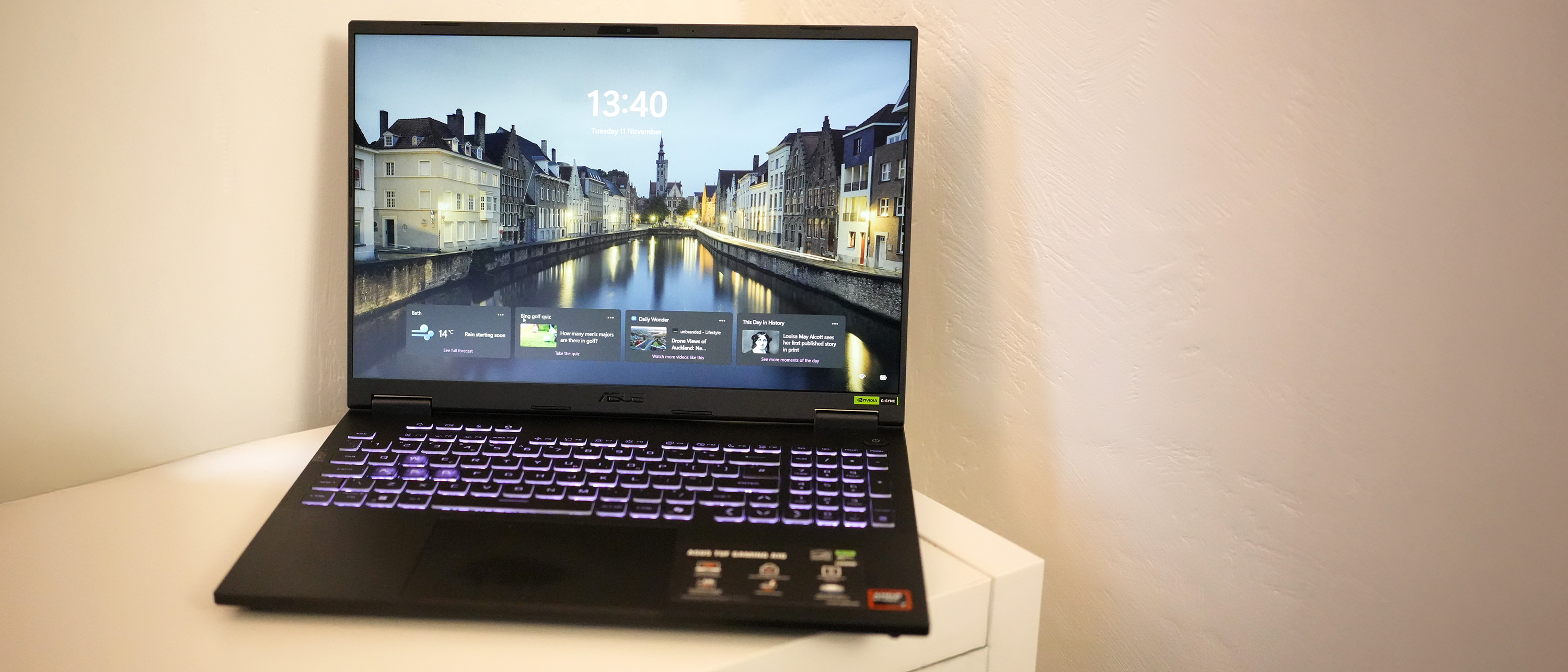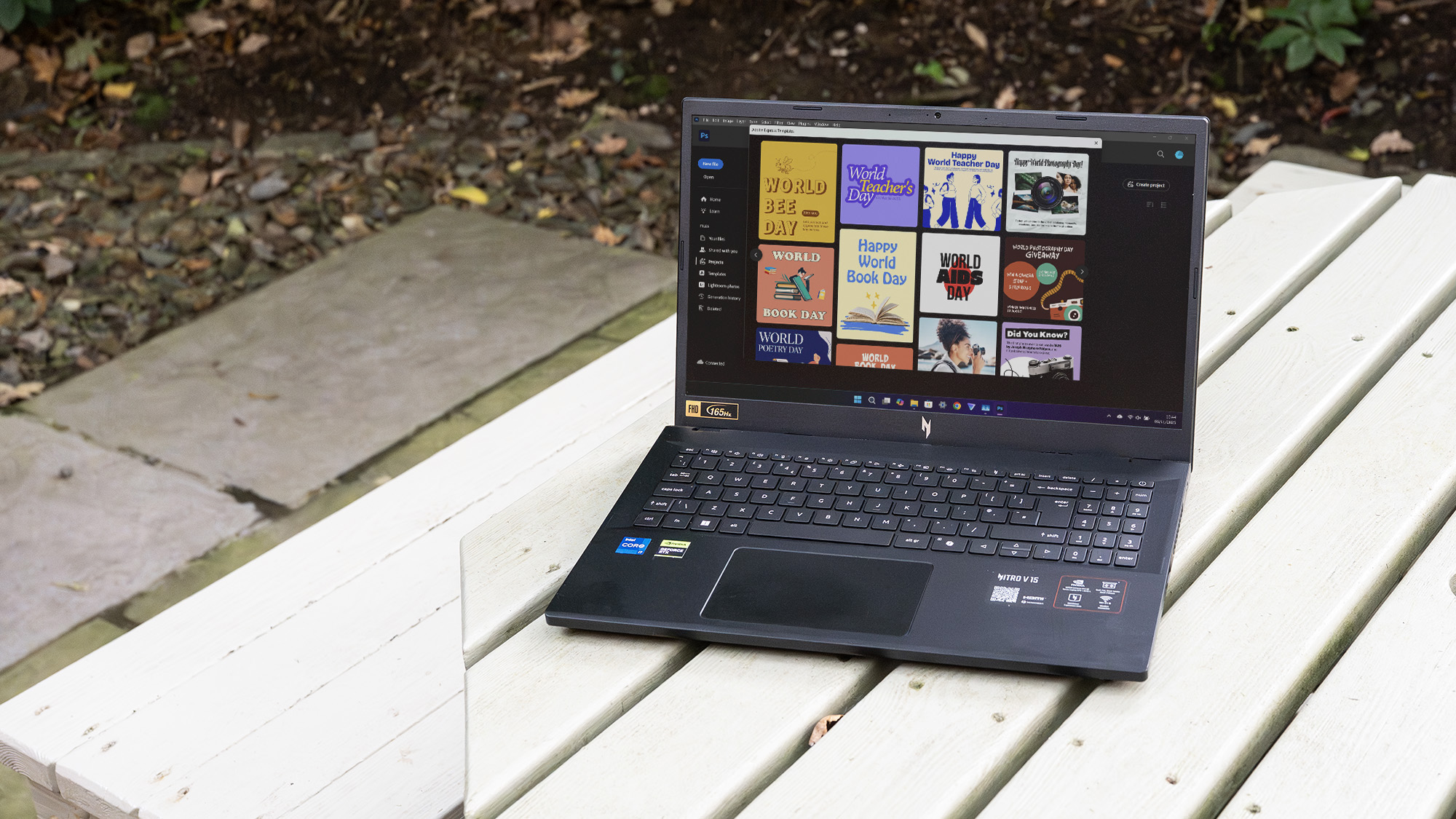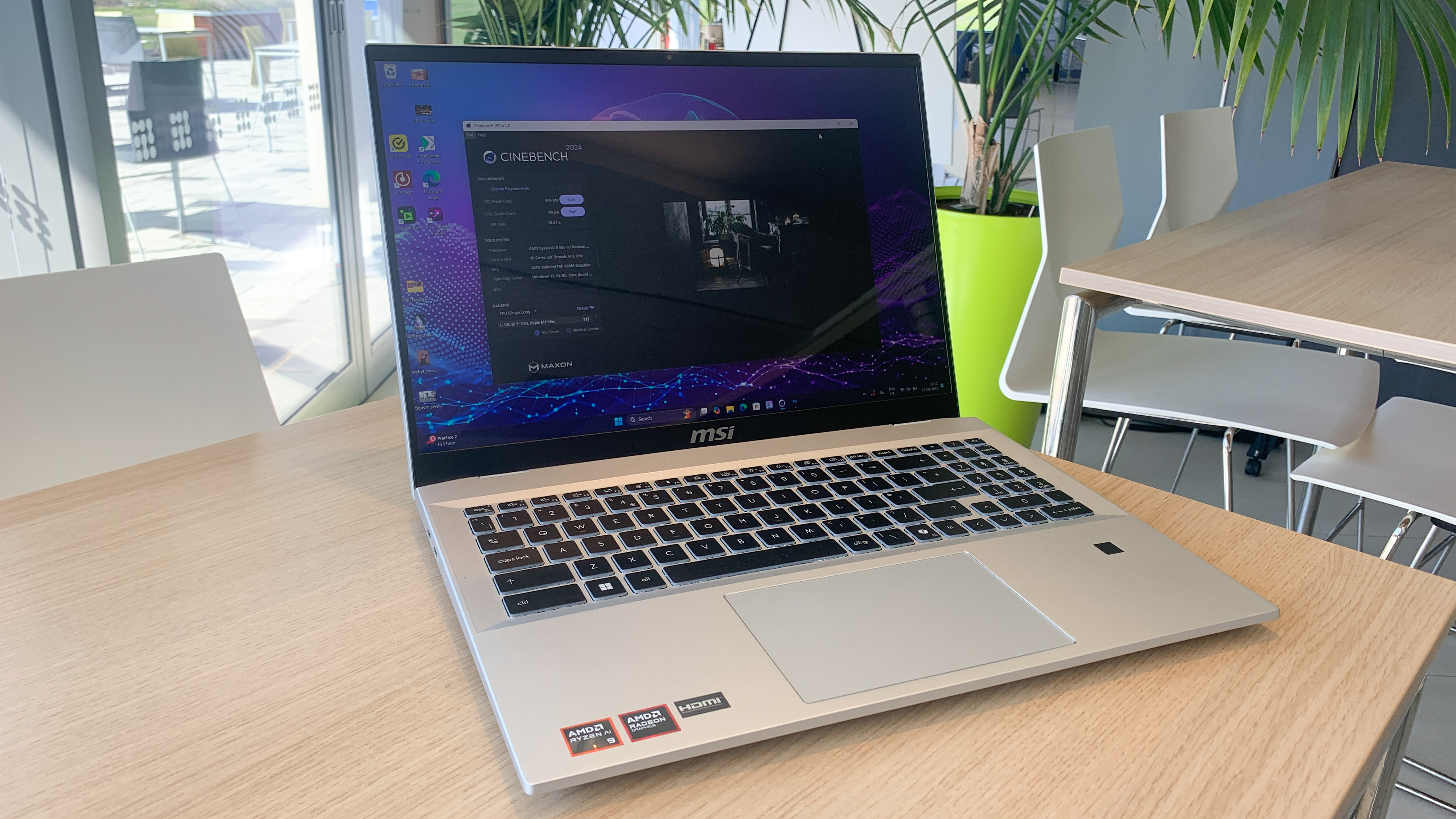Our Verdict
There's a lot to like about the ASUS TUF Gaming A16. It performs reasonably well in creative tasks and is well positioned to connect to fast storage and networking. The problem is that it costs a bit too much when you compare it to similarly specced machines, and that’s going to put potential buyers off.
For
- Strong CPU
- Better than integrated graphics
- Respectable battery life
Against
- A bit too expensive
- Also rather loud
Why you can trust Creative Bloq
Gaming laptops get expensive quickly, but there's a class of portable machine that teams a decent CPU with an entry-level GPU for less than £1,500, and while these laptops aren’t going to give you enormous framerates in Battlefield 6 at 4K, they’re pretty good for throwing pixels around at 1080p and have a lot more graphics processing capability than thin and light ultrabooks that rely on a CPU’s integrated graphics cores. The ASUS TUF model we’ve got here uses an AMD CPU and Nvidia graphics card to provide enough processing grunt for most 2D applications, including Photoshop and video-editing, and it’s not bad at running AI and 3D apps either.
Key specifications
CPU: | AMD Ryzen 7 260, 8 cores |
NPU: | AMD XDNA, 16 TOPS |
Graphics: | Nvidia GeForce RTX 5050, 8GB, 55W |
Memory: | 16GB DDR5-5600 |
Storage: | 1TB SSD |
Screen size: | 16in |
Screen type: | IPS |
Resolution: | 1920 x 1200 |
Refresh rate: | 165Hz |
Colour gamut (measured): | 79% P3 |
Brightness (measured): | 385 nits |
Ports: | 1x HDMI 2.1, 2x USB 3.2 Gen 2 Type-A, 1x USB 2.0 Type-A, 1x Type-C |
Wireless connectivity: | Wi-Fi 6E, Bluetooth 5.3 |
Dimensions: | 35.4 x 26.9 x 1.79cm |
Weight: | 2.2kg |
Design, build and display
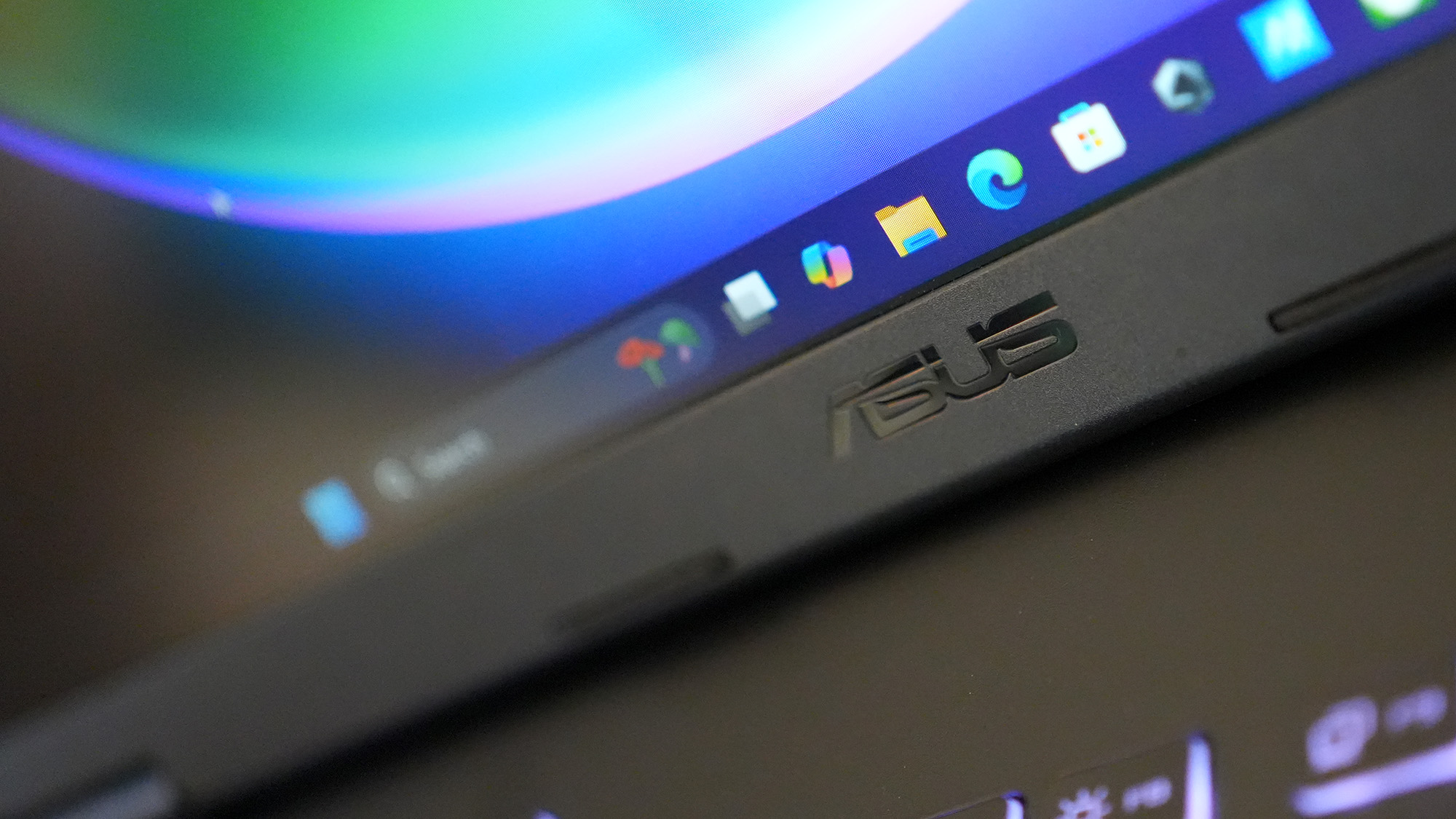
• A bit gamer-centric
• Quite heavy
Expectations for gaming laptops are often of a thicker-than-usual machine with some sort of bright lighting on it. The ASUS TUF Gaming A16 for 2025 manages to be slimmer than you might expect, its black plastic casing unsullied by lights apart from under its keyboard and four status LEDs arranged in a circle behind the screen, where the body of the laptop protrudes past the hinge, so you’ll never see them in normal use. The WASD keys light up differently to the rest of the keyboard - a gamer-centric feature, as is the moulded protrusion on the W to make it easier to find by feel - but more useful are the extra volume keys above the F row, along with a button that launches ASUS’ Armory Crate software you’ll want to use precisely once to enable Turbo mode while plugged in and stop the keyboard from flashing.
The screen bezel is fairly thin, and while it’s heavy at 2.2kg, this is a 16-incher and destined to spend its life on a tabletop rather than being actually on your lap, so that’s less of an issue. There are cooling fans underneath, and rubber feet to lift the base and improve airflow as a result. The only drawback to the design is that the front corners are rather acutely angled and therefore a bit sharp, whereas the rear corners have been cut off.
The screen is a 16:10 IPS, which is decently bright at 385 nits, and can display the whole sRGB colour gamut - all of which is fine for gamers and office workers - but falls a bit short in the wider colour spaces, managing less than 80% of both Adobe RGB and DCI-P3 in our tests.
Design score: 3/5
Features
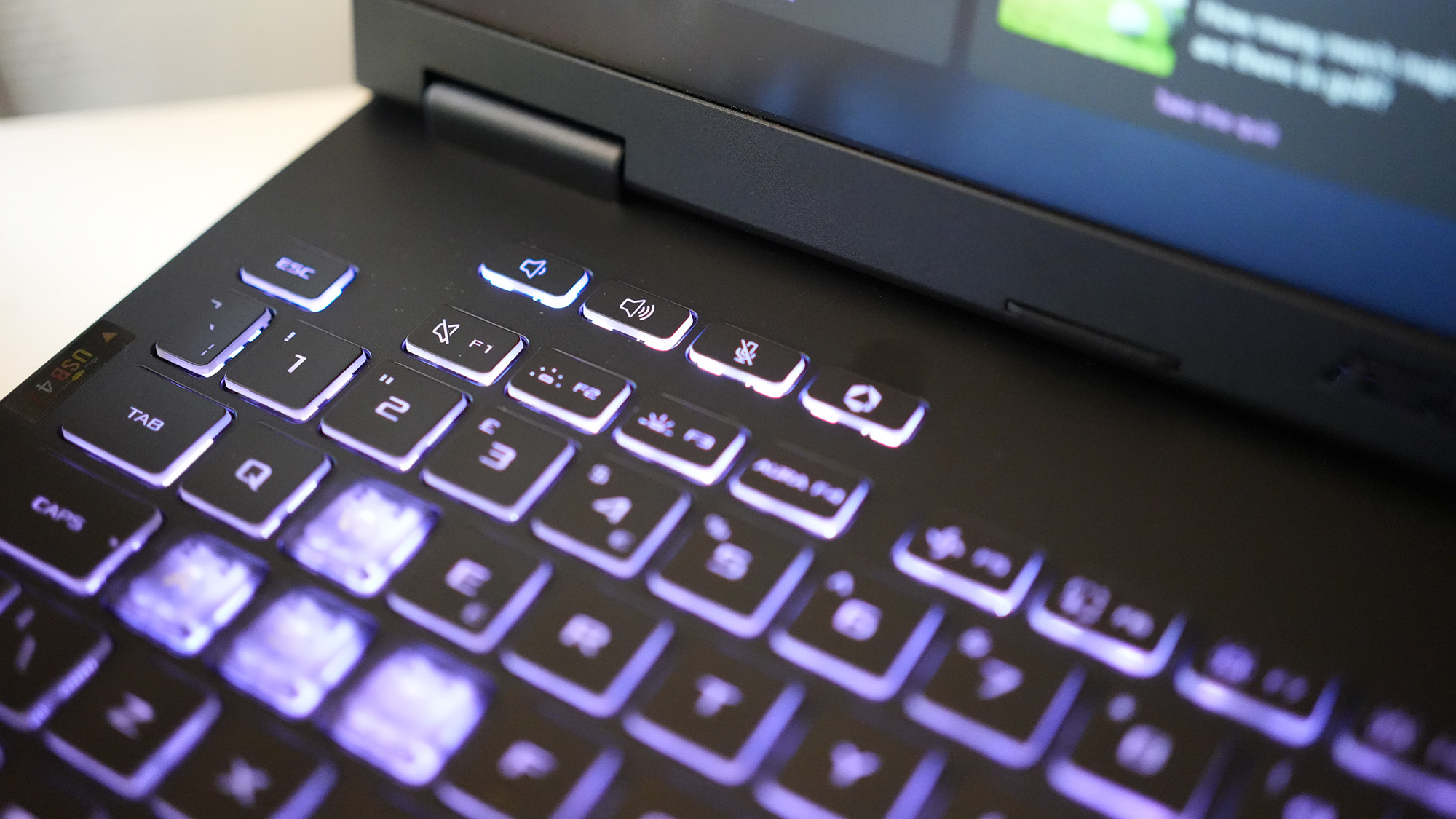
• Lots of USB
• Cramped keyboard
Daily design news, reviews, how-tos and more, as picked by the editors.
The A16 is a well-specced machine in terms of connectivity. There's a USB4 port, which you’ll be able to dedicate to fast storage thanks to a full-size HDMI and a charging port nearby (it will charge through the USB-C port too, however, so you don’t have to take the charger everywhere you go). There are three Type-A USB ports and an Ethernet port, making it possible to load the laptop up with cables before you even start connecting wireless peripherals.
The keyboard is a bit cramped to use due to the numpad at the side, but the keys have a decent amount of travel and aren’t bad to type on. There’s a very large # key above the Enter, and full-size arrow keys, though the gap between them and the Copilot button could have been used to make the space bar larger. Below the keyboard, the trackpad is average-sized and responsive enough, closer to the left-hand side of the casing than to the right, which may cause issues depending on where you like to rest your wrists while typing.
One oddity was that, throughout our time with the A16, it occasionally reported that two screens were attached despite the HDMI port being empty. This was curious, but didn’t seem to affect its performance, and may be an artefact of the Nvidia Optimus system switching between the discrete and integrated GPUs to save power.
Feature score: 3.5/5
Benchmark scores
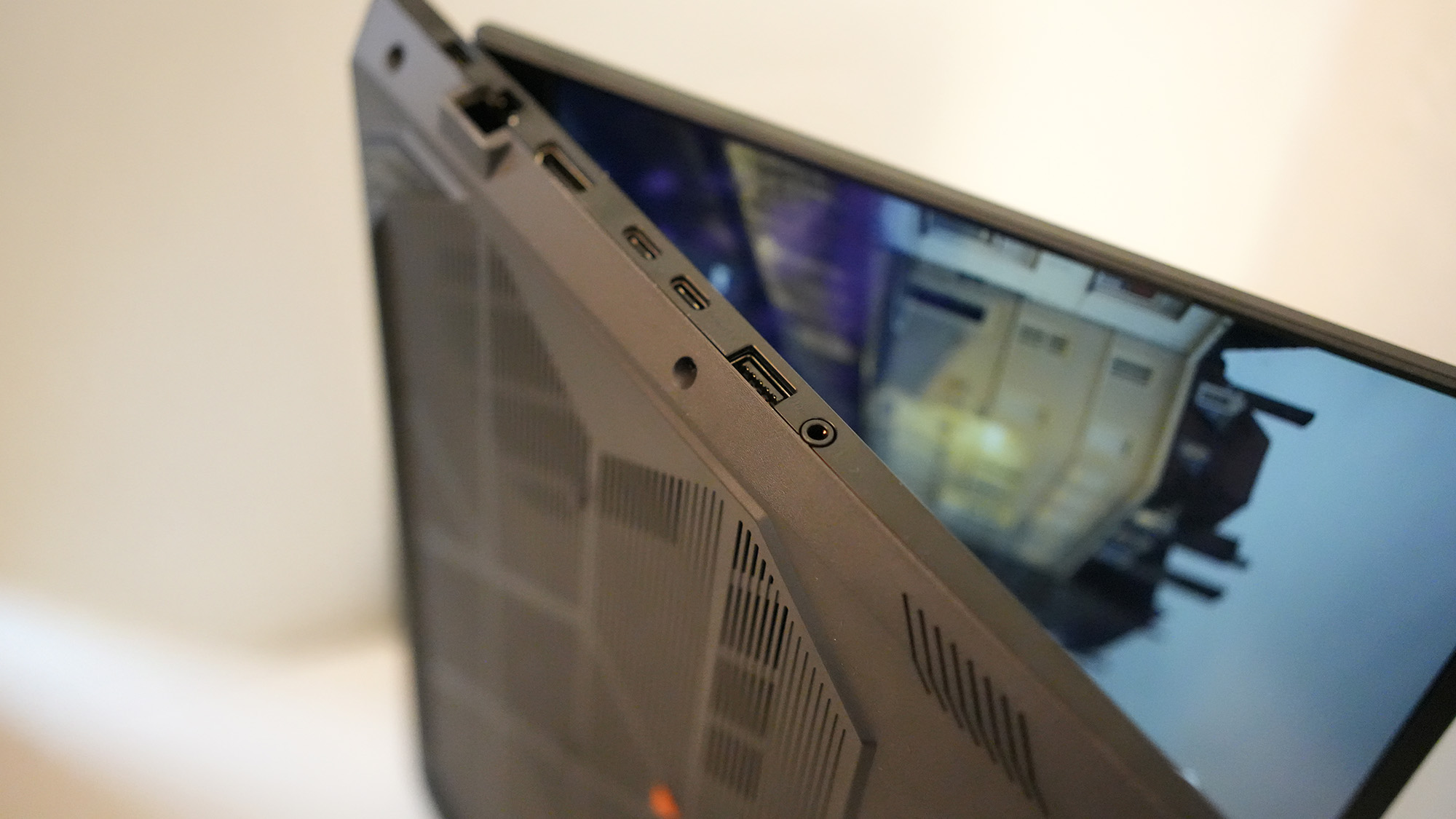
We test every one of our laptops using the same benchmarking software suite to give you a thorough overview of its suitability for creatives of all disciplines and levels. This includes:
• Geekbench: Tests the CPU for single-core and multi-core power, and the GPU for the system's potential for gaming, image processing, or video editing. Geekbench AI tests the CPU and GPU on a variety of AI-powered and AI-boosted tasks.
• Cinebench: Tests the CPU and GPU's ability to run Cinema 4D and Redshift.
• UL Procyon: Uses UL Solutions' Procyon software suite to test the system's ability for AI image generation in Stable Diffusion, its Microsoft Office performance and its battery life in a looping video test.
• Topaz Video AI: We use Topaz Video AI to test the system's ability to upscale video and convert video to slow-motion.
• PugetBench for Creators: We use the PugetBench for Creators benchmarking suite to test the system's ability to run several key tasks in Photoshop and Adobe Premiere Pro, as well as its performance when encoding/transcoding video.
• ON1 Resize AI: Tests the system's ability to resize 5 photos to 200% in a batch process. We take the total time taken to resize the images and divide by 5.
Performance
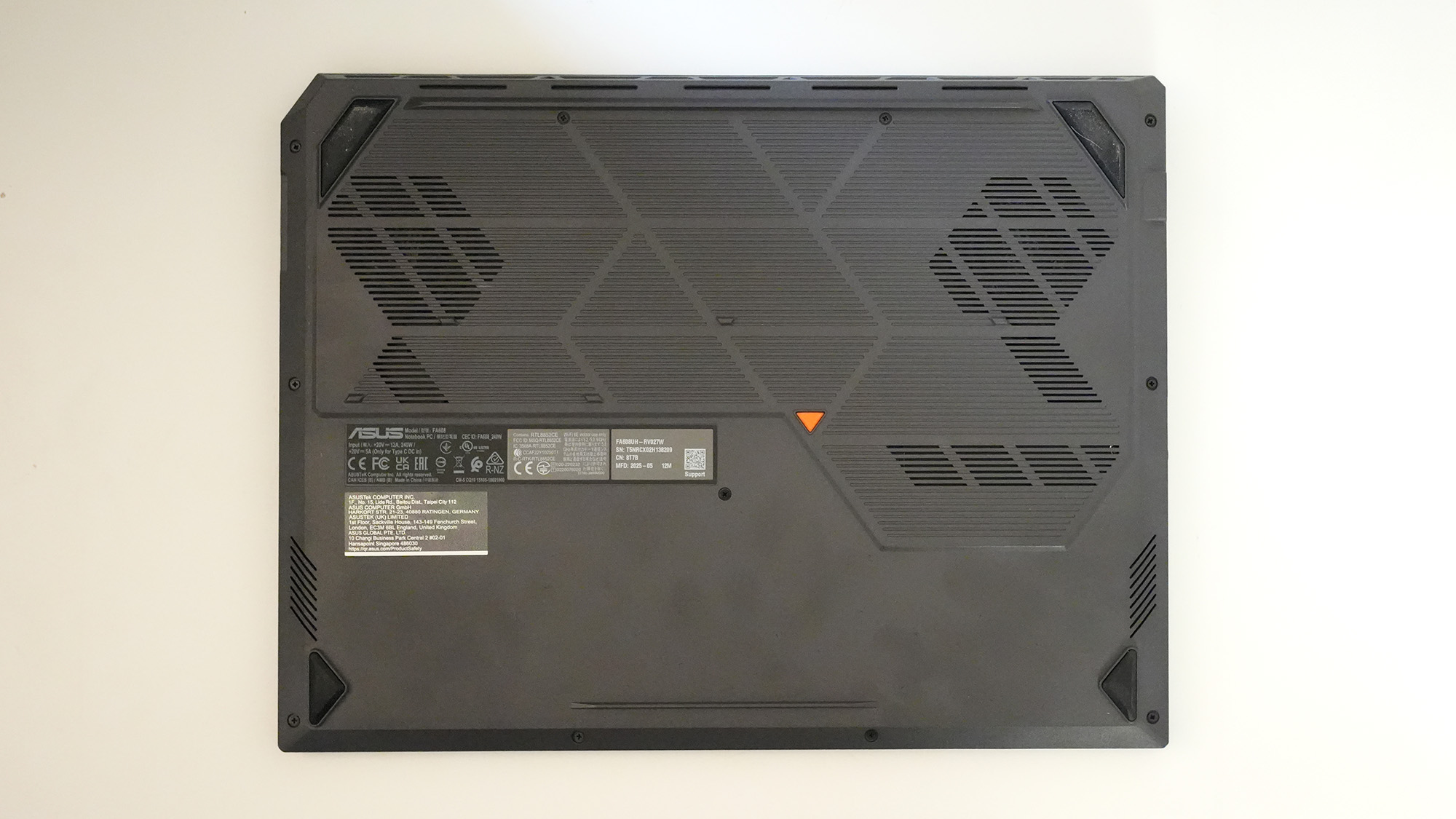
• Much better than integrated graphics
• Surprising battery life
It’s astonishing how much a discrete GPU, even an entry-level one like the RTX 5050 here, makes to a laptop’s performance in creative apps. Having that extra chip (and its cooling system) in the laptop is so much better than using the CPU’s integrated graphics cores
The CPU itself is about in the middle ground for late 2025. It’s an eight-core chip built on AMD’s Zen 4 architecture, which puts it a step behind the big Zen 5 desktop CPUs. It’s still better than a lot of low-power chips, and produces similar results as some 13th-gen Intel and 1st-gen Qualcomm Snapdragon processors. In the Cinebench CPU rendering test, it’s just behind the Apple M4 in last year’s MacBook Pro. This, combined with the GPU, means it’s great for office tasks and 2D graphics work - its overall score in our Photoshop tests puts it ahead of the HP Omen Max 16 and ASUS ProArt P16, but for video editing in Premiere Pro it drops behind.
Putting it in Turbo mode and trying to get the best out of its processors also kicks the cooling system into high gear, and it can get very noisy when asked to render complex graphics. A pair of wireless headphones would therefore make a good accompaniment to the laptop.
Forced to loop a video until it collapsed from exhaustion, the TUF A16 managed a surprising result: nearly eight hours of constant use. That’s approaching the all-day battery life we’ve come to expect from anything that’s not a gaming laptop, but firing up the GPU will bring it down, and making it run gaming benchmarks sees it drop significantly. The 90Wh battery in the A16 is a little larger than the common 76Wh models we’ve seen elsewhere, such as in the Acer Nitro V15, which explains the endurance boost.
Performance score: 3.5/5
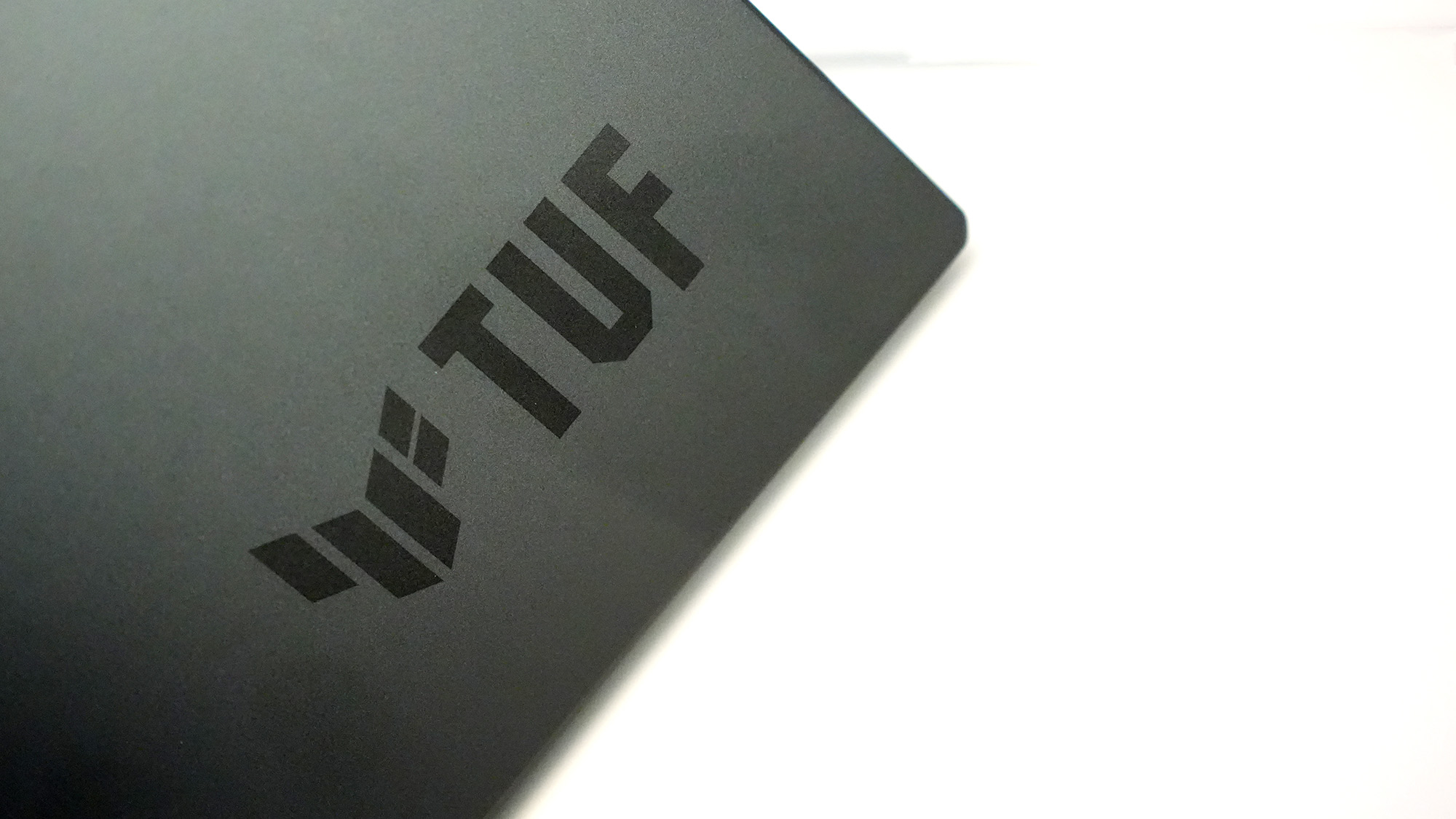
Price
At the time of writing, the ASUS TUF Gaming A16 is priced at £1,399 in the UK. The US base model has a 5060 so isn’t fully comparable. This is quite pricey for a budget laptop - other machines such as the Acer Nitro V15 or Lenovo LOQ 15IAX9 can be acquired for less - and in the case of the Nitro, that’s a bit of a problem, as it has a GPU that’s one step further up Nvidia’s ladder. You can also pick up a very nice MacBook Air for the same sort of price, and once the M5 version of that laptop appears, it’ll only be the gamers and heavy renderers who’ll want to shell out more. It’s only £200 cheaper than the base model MacBook Pro M5, which beats it handily in the CPU benchmarks, too.
Value score: 2.5/5
Who is it for?
• Gamer-creatives
Buying a laptop with a low-end GPU opens up a world of Windows-based rendering software and games. This, combined with the A16’s very decent battery life when not using its Nvidia chip, means it’s a useful all-round laptop that will find a use in the studios of photographers, graphic designers, students and more.
Attributes | Notes | Rating |
|---|---|---|
Design: | Not too thick, but quite heavy. | 3/5 |
Features: | Lots of ports to play with. | 3.5/5 |
Performance: | Doesn't do badly, but makes a racket doing it. | 3.5/5 |
Value: | Feels too expensive for what you get. | 2.5/5 |
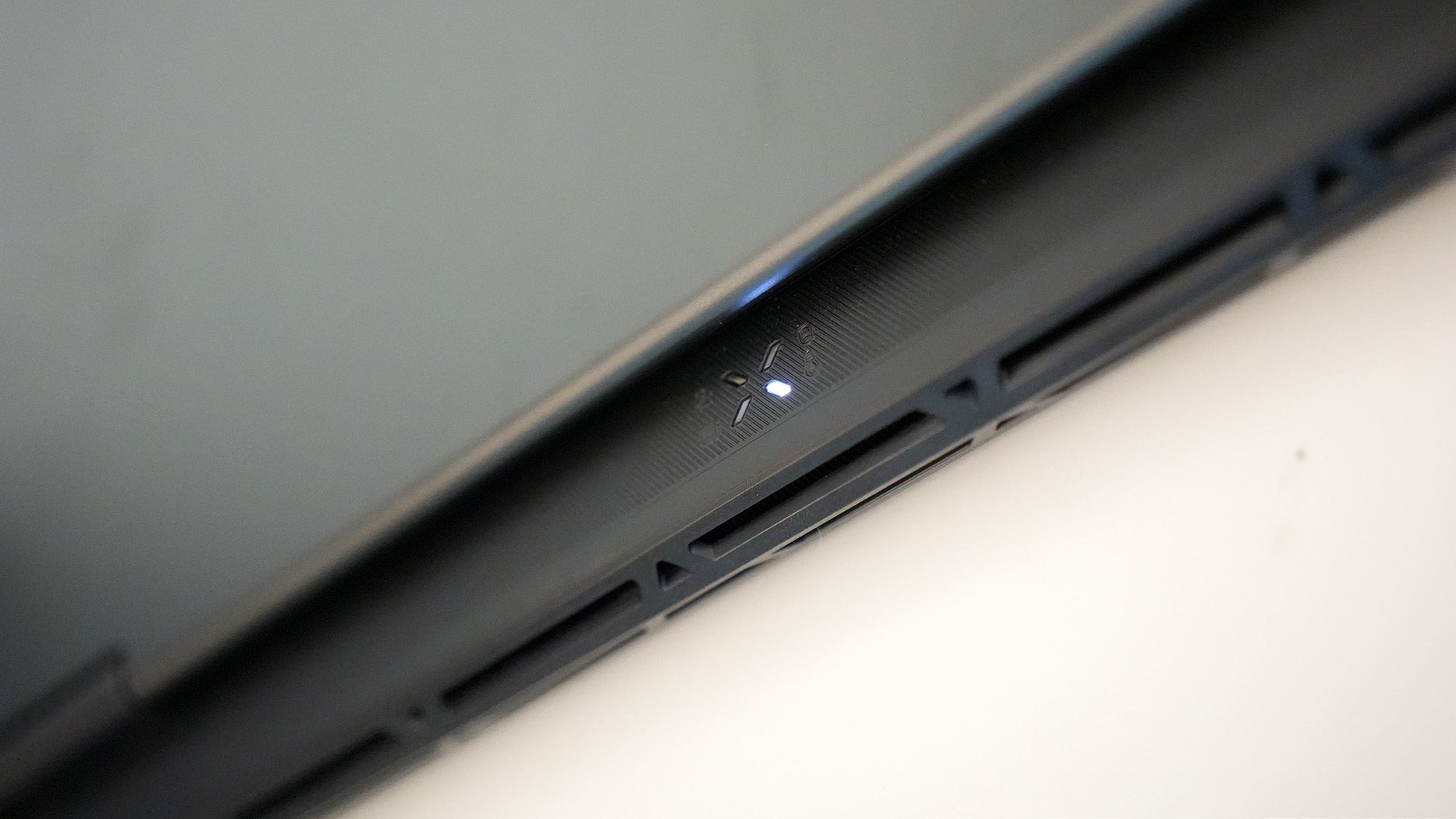
Buy it if...
- You game as well as create
- A 5050 is enough GPU
- You don't mind the price
Don't buy it if...
- You'd rather pay less
- Integrated graphics are enough
- You need something thin and light
Also consider
out of 10
There's a lot to like about the ASUS TUF Gaming A16. It performs reasonably well in creative tasks and is well positioned to connect to fast storage and networking. The problem is that it costs a bit too much when you compare it to similarly specced machines, and that’s going to put potential buyers off.

Ian Evenden has been a journalist for over 20 years, starting in the days of QuarkXpress 4 and Photoshop 5. He now mainly works in Creative Cloud and Google Docs, but can always find a use for a powerful laptop or two. When not sweating over page layout or photo editing, you can find him peering at the stars or growing vegetables.
You must confirm your public display name before commenting
Please logout and then login again, you will then be prompted to enter your display name.
